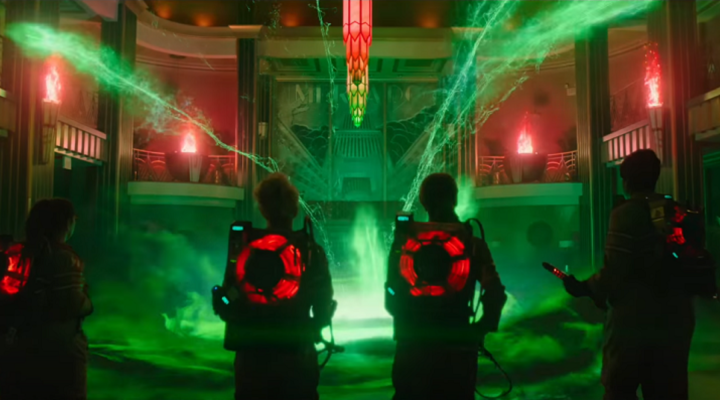
Visual effects in ‘Ghostbusters’: 1984 and today

It’s been more than 30 years since we saw Bill Murray get slimed in the original “Ghostbusters.”
The new “Ghostbusters” movie opens around the country today—with a new story, new actors and new visual effects.
The reboot got us wondering about how visual effects have changed in the three-plus decades since the original was released.
“This was pre-digital age,” said John Bruno, visual effects art director on the 1984 film. “We just had to do as much in camera as possible.” Slimer was played by an actor in a suit against a black background. “The Marshmallow Man was a guy in a suit on a miniature set,” Bruno said.
He remembers his team sat down with the director, Ivan Reitman, to figure out how to pull it all off on a 10-month deadline.
“We just started,” Bruno said.
Click on the audio to hear Bruno recall the first test of the Stay Puft Marshmallow Man.
Today’s digital effects are far more advanced. They allow Hollywood storytellers to create pretty much whatever they can dream up.
But still, many visual effects supervisors prefer to shoot with practical effects and then tweak them digitally. That’s what they did for the new “Ghostbusters” film.
“One of the things you have to do as a visual effects supervisor is you have to shoot things correctly,” said Peter Travers, visual effects supervisor on the new film. “If you don’t shoot it right, no matter how much talent you pour into post-production, it’s never going to look right.”
For the new “Ghostbusters,” one aspect of making it look “right” meant hiring actors to play the ghosts and then digitally altering the shots.
“Effects are basically judged by the emotive performance of actors in a movie,” Travers said.
“This is not acting against a tennis ball,” he explained. “Everybody on set, including the actresses know what’s going on.”
Click on the audio to hear Travers discuss his philosophy on the relationship between practical photography and digital effects.
Travers had a puppet play Slimer on set, and then the artists at Sony Pictures Imageworks animated the ghost digitally, fully replacing the puppet in the film. One advantage of animating Slimer, said Travers, was that they could add digital slime, “so when he moved around quickly, slime would fly around.”
But a lot of the other slime you’ll see in the 2016 film is real, super-sticky slime. Similar, though not identical, to the goo they used to slime actors back in 1984.
Bruno said they used Methyl cellulose for the original shoot.
Travers didn’t name the exact chemical make-up of the slime this time around. But said they tested various formulations of a glue-like substance on members of the special effects department.
“Just depending on how disgustingly it gooped off of them, as soon as it was really disgusting, we knew we had it,” he said.
There’s a lot happening in the world. Through it all, Marketplace is here for you.
You rely on Marketplace to break down the world’s events and tell you how it affects you in a fact-based, approachable way. We rely on your financial support to keep making that possible.
Your donation today powers the independent journalism that you rely on. For just $5/month, you can help sustain Marketplace so we can keep reporting on the things that matter to you.


















